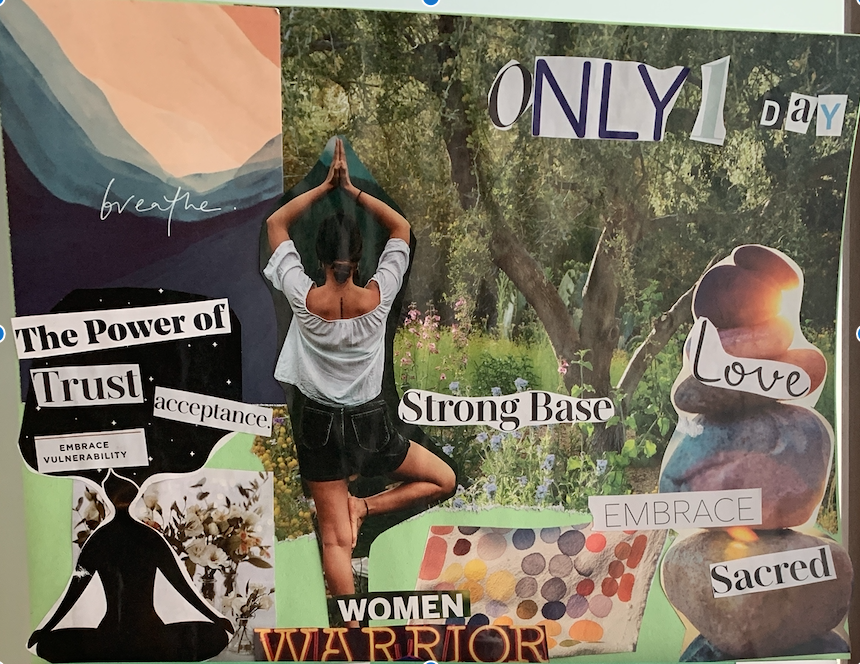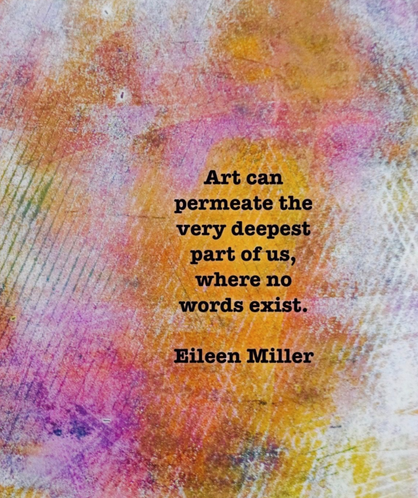Expressive Arts Therapy |
"Art expression is a way to make tangible what is secret and confusing." :Cathy Malchiodi
Art making, play, creative self-expression and music are all natural forms of human communication, they are part of our "language". Children particularly engage in this form of self-expression naturally. Adults, however, sometimes lose touch with this aspect of themselves, and so much of their life goes unexpressed...uncommunicated.
Expressive Arts Therapy invites the client to use this "language" in order to communicate, to express their internal world which is so hard to put into words. We've all heard the saying, "a picture is worth a thousand words". This is the value of making art in a therapeutic context. Because, sometimes we don't have the words, or don't really understand all that we feel in our mind, heart, body and soul. Or, speaking the words is too scary, threatening, or confusing and therefore not an option.
The art facilitates the healing process by allowing emotional burdens to finally be expressed. It is a wonderful medium for initiating the healing process. Expressive Arts Therapy allows personal content to finally be externalized and acknowledged, often for the very first time. It allows people to access and manifest aspects of themselves which would otherwise go unheard. Simply put, it gives "voice" to the WHOLE person.
Expressive Arts Therapy is cathartic, grounding, contained, and empowering.
Some experiences/memories are "unspeakable", confusing, or too painful to put into words. The containment of the art, the non-verbal nature of the art making process, and the safety of the therapeutic relationship, allow some experiences to be expressed for the very first time. What a relief for the client. Finally, the healing process can begin.
Expressive Arts Therapy invites the client to use this "language" in order to communicate, to express their internal world which is so hard to put into words. We've all heard the saying, "a picture is worth a thousand words". This is the value of making art in a therapeutic context. Because, sometimes we don't have the words, or don't really understand all that we feel in our mind, heart, body and soul. Or, speaking the words is too scary, threatening, or confusing and therefore not an option.
The art facilitates the healing process by allowing emotional burdens to finally be expressed. It is a wonderful medium for initiating the healing process. Expressive Arts Therapy allows personal content to finally be externalized and acknowledged, often for the very first time. It allows people to access and manifest aspects of themselves which would otherwise go unheard. Simply put, it gives "voice" to the WHOLE person.
Expressive Arts Therapy is cathartic, grounding, contained, and empowering.
Some experiences/memories are "unspeakable", confusing, or too painful to put into words. The containment of the art, the non-verbal nature of the art making process, and the safety of the therapeutic relationship, allow some experiences to be expressed for the very first time. What a relief for the client. Finally, the healing process can begin.
Art and Neuroscience
Neuroscience research is showing that the language/words which we use to explain our experiences are stored in one area of our brain, while so many other aspects of an experience are fragmented and stored in various other areas of our brain. With the opportunity to use non-verbal forms of self-expression, we tap into other areas of the brain and externalize the imagery that speaks for our body, mind, spirit and senses. We then come face-to-face with entirely new aspects of our own reality. Now this content is available to contemplate, to heal, and to restore.
With information from the left and right side of the brain available, all the "pieces of the puzzle" can be put together. Their narrative is more complete. The client can finally make sense of their story and process it as a whole event. This finally allows a person to transcend the experience.
Neuroscience research is showing that the language/words which we use to explain our experiences are stored in one area of our brain, while so many other aspects of an experience are fragmented and stored in various other areas of our brain. With the opportunity to use non-verbal forms of self-expression, we tap into other areas of the brain and externalize the imagery that speaks for our body, mind, spirit and senses. We then come face-to-face with entirely new aspects of our own reality. Now this content is available to contemplate, to heal, and to restore.
With information from the left and right side of the brain available, all the "pieces of the puzzle" can be put together. Their narrative is more complete. The client can finally make sense of their story and process it as a whole event. This finally allows a person to transcend the experience.
|
What Does It Help With?
*I am not a Registered Art Therapist nor have an Art Therapy degree. I have a certification and advanced certification in Trauma-Informed Expressive Arts Therapy. And I love art.
|

